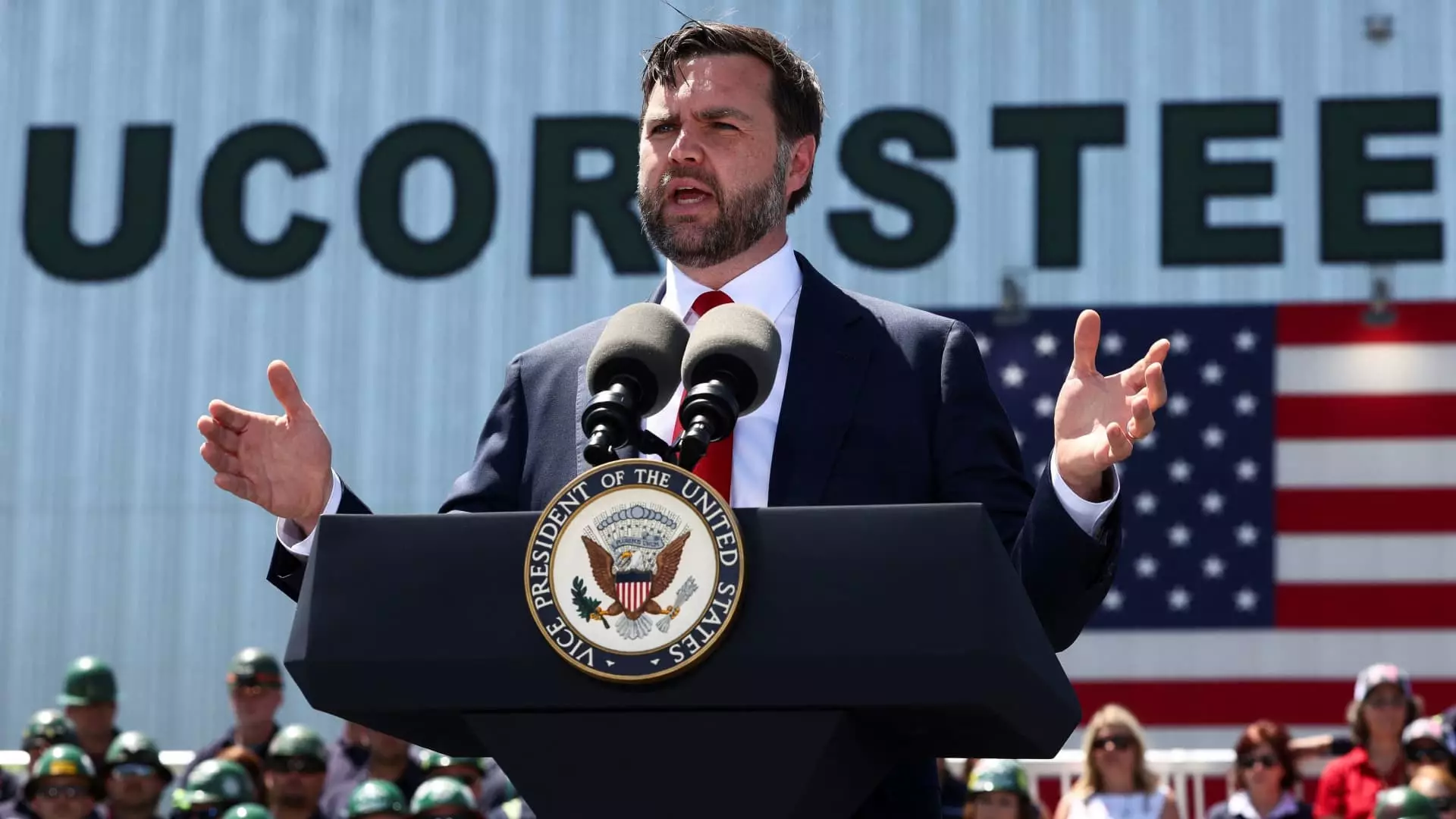In a politically charged climate, it’s hard to ignore the theatrics surrounding President Donald Trump and Vice President JD Vance as they set their sights on the Federal Reserve. Their recent public pressure on the central bank to lower interest rates reeks of desperation rather than a well-planned economic strategy. On social media, Vance characterized the Fed’s reluctance to ease monetary policy as “monetary malpractice,” a term that undermines the complexities of economic governance. Instead of serving as thoughtful leaders, their actions appear to prioritize political maneuvering over substantial economic analysis.
The Bureau of Labor Statistics reported a modest 0.1% increase in the consumer price index (CPI), which Vance and Trump seem to interpret as a green light for aggressive monetary policy changes. However, cherry-picking data to justify a political agenda is a disservice to a nuanced understanding of economic indicators. While inflation rates of 2.4% and 2.8% may suggest some relief, they remain above the Fed’s ideal target of 2%. Trump’s call for a full percentage point cut from the current range displays not just optimism but a profound misunderstanding of how monetary policy impacts various economic sectors.
Economic Illiteracy and Political Theater
It’s alarming how both Trump and Vance continue to downplay the complexities of the economic landscape to bolster their political positions. Insisting on lower interest rates without acknowledging the potential ramifications can only be described as economic illiteracy. This trend of treating monetary policy as a mere political tool is deeply concerning. Financial markets thrive on stability and predictability; thus, unpredictable interventions can lead to disastrous repercussions, including loss of investor confidence.
Moreover, the assertion that the Fed should immediately respond to ever-shifting inflationary pressures suggests an impatience that could leave lasting scars. Economic stability requires a long-term vision, which seems to be absent from this administration. Instead of approaching the Federal Reserve as a partner in economic governance, Trump and Vance resort to public ambushes, framing the Fed’s caution as a lack of responsiveness. Such behavior not only undermines the independence of the Federal Reserve but also sets a dangerous precedent for future administrations.
Market Reactions and the Expectation of Inaction
As the Federal Open Market Committee (FOMC) prepares to make its interest rate decision, market reactions seem to reflect a stark divergence from the administration’s tempo. Traders now assign virtually zero chance of a rate cut, indicating confidence in the Fed’s cautious approach. There’s a palpable tension between political desires and economic realities, and it’s essential for the Fed to remember its dual mandate: controlling inflation while fostering maximum employment.
The insistence from Trump and Vance that the Fed “ease” rates misrepresents the complexities facing monetary policymakers. Elyse Ausenbaugh’s comments on the ongoing uncertainty encapsulate the challenge: to act too hastily risks choking off any long-term economic recovery still in its infancy. As the past has shown, manipulating monetary policy for short-term political gain can lead to inflationary spirals and increased economic inequities.
While the public clamoring from Trump and Vance may resonate with some, the economic reality demands a level of skepticism. Short-sighted political demands from those atop the hierarchy only serve to undermine the efficacy of American financial institutions. This episode serves as a reminder of the intricate balance required in economic governance and the potential perils when politics intrude into nuanced, data-driven decisions.

